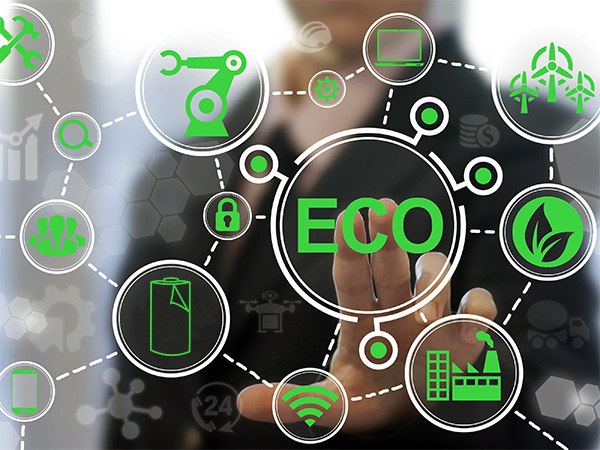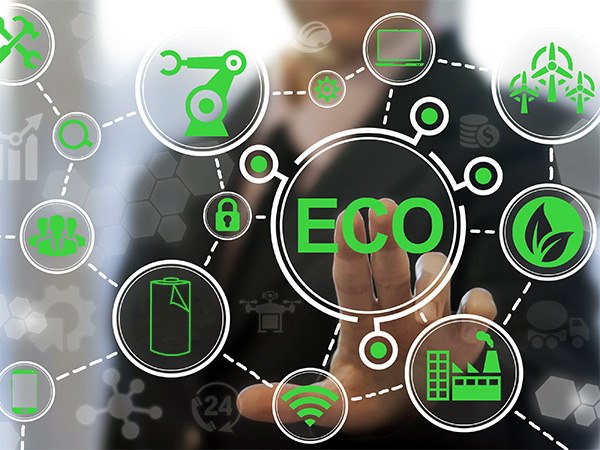How Eco-Packaging Impacts Sustainability
Packaging Materials | Environment | The Business of Packaging

As it stands in 2017, we can’t avoid plastics – they’re everywhere in our lives from our kitchen appliances to the doctor’s office. Contrary to popular belief, all plastics aren’t the same. There are many types of eco-green packaging options comprised of sustainable plastics available today for all types of products, and they can hold the opportunity for huge savings in your business operation.For decades, we have known that human contributions to the Earth are negatively impacting greenhouse gas emissions. In 2009, the EPA released a report titled 'Opportunities to Reduce Greenhouse Gas Emissions through Materials and Land Management Practices.' Though the increase in harmful Greenhouse Gas emissions isn’t breaking news, it was found that a staggering 42% of emissions from the United States alone are “associated with the energy used to produce, process, transport, and dispose of the food we eat and the goods we use.”
With Earth Day just around the corner, it’s a fitting time to address why Industrial Packaging offers ecologically friendly packaging to our customers. When it comes to manufacturing and distribution, there are many reasons why making the switch to a more sustainable packaging option is not only good for the Earth, but also for your brand. The best part about efficient flexible packaging - it doesn’t have to break the bank.
What makes a packaging material sustainable?
The bulk of sustainability in packaging materials starts with sourcing of the materials. There are several characteristics that can help you determine if the materials you are packaging with are sustainable or not, including:
- If the material’s chemical properties are inert, which determines whether the contained product is safe to be consumed and doesn’t release toxins into the environment.
- If clean methods for production are used in the creation of the material from its raw counterparts.
- If the performance of the material has not diminished from the original non-eco material’s performance standards.
How does switching benefit your company?
Whether you care more about the economical factors or the eco-friendly advantages, there are numerous benefits in utilizing eco green packaging. Sustainability can work for everyone and create a cost-effective business model that increases profit and brand image.Light-weight polyolefin material can be less expensive, while also improving your impact on the environment when compared to alternative methods such as corrugated, paper or glass material. The consumption of greenhouse gas emissions and the use of energy is notably less when using plastics packaging. Additionally, the cost of freight and the reduction of used space are significant when compared to the other packaging alternatives.When researching the sustainability initiatives of various companies, the Harvard Business Review concluded that their data shows, “sustainability is a mother lode of organizational and technological innovations that yield both bottom-line and top-line returns. Becoming environment-friendly lowers costs because companies end up reducing the inputs they use.”
Eco-packaging is also:
- Easier to process, thus reducing labor and material costs from waste.
- Durable, reducing the chances for goods being damaged during their lifecycle.
- Lighter, which makes distribution cheaper and more efficient.
- Less expensive to move and dispose of because it’s recyclable, and in some applications, re-useable and/or compostable.
For the Earth Day revolutionary in us all:
Single-use plastic has an unfathomable amount of CO2 emission by-product just to produce, but when adding in the harmful emissions caused by transportation and disposal, you have a direct path to irreversible ecological damage on your hands. Plastic Island, an island in the Pacific comprised completely of trash, is just one example of our production habits gone wrong. The use of recyclable materials is now widely accepted as one of the best ways to help reduce this ever-growing problem of extreme waste volume.According to Stanford University, “one ton of recycled plastic saves 5,774 kWh of energy, 16.3 barrels of oil, 98 million BTU's of energy, and 30 cubic yards of landfill space.”Sustainable packaging materials are produced using more efficient methods, which helps to cut energy needs and the waste of raw resources such as oil and coal. This creates a direct reduction in negative environmental impact.
Expanding your customer base:
A study conducted by Unilever was undertaken in five countries to determine the percentage of people who would switch brands if sustainability was a brand choice. They found that 21% of respondents would “actively choose brands if they made their sustainability credentials clearer on their packaging and in their marketing.” Unilever calculated that this creates an unclaimed market of upwards of $1.03 trillion. Moreover, 78% of American consumers claimed that “they feel better when they buy products that are sustainably produced.”There’s a huge buzz about eco-consciousness, and using recyclable plastic in your packaging can help attract new customers and build loyalty with your existing clients. Making an effort to be a more sustainable business creates a positive and responsible brand image, and this could be a key differentiator from your competition.
For the headache relief:
There are examples of big brands that skated the bare-minimum of emissions and production standards and paid the price for it in lost sales. General Motors ignored the new emission standards created by the California Air Resource Board in 2002 and fell behind on introducing new models in subsequent years compared to their rivals. In 2016, those voluntary standards became law.Conversely, some companies were smart about making green upgrades before they were required to. Hewlett Packard eliminated lead soldering in its manufacturing processes and developed modern and sustainable alternatives. It reaped the benefits of this smart switch by being allowed to sell within the European Union, which immediately opened a huge new market. The use of lead soldering is now illegal.
Flexible Options
There are a multitude of options available when switching out of a toxic packaging material to eco-packaging material. Polyolefin materials offer highly flexible and versatile options for packaging including excellent printability and easy recyclability. If there is a packaging need, there’s an eco-friendly material that can do the job.
Polyolefin can be formed into a great variety of packaging options. These include, but aren’t limited to shrink film, stretch film, and carded packaging (e.g., clamshell, skin, and blister packaging).By using sustainable packaging, you’re able to both reduce costs and make a substantial positive impact on the environment. With Earth Day just around the corner, there’s no better time to start designing your own sustainable, green packaging system. Start by checking out our cheat sheet for packaging optimization here!
About David Roberge
I am grateful to be part of the outstanding Industrial Packaging team. I am able to hang out with some of the most knowledgeable folks in the packaging industry. I feel even luckier that I am able to share that knowledge with you. I love learning, hiking, and growing people and teams both personally and professionally, and helping companies grow better.



